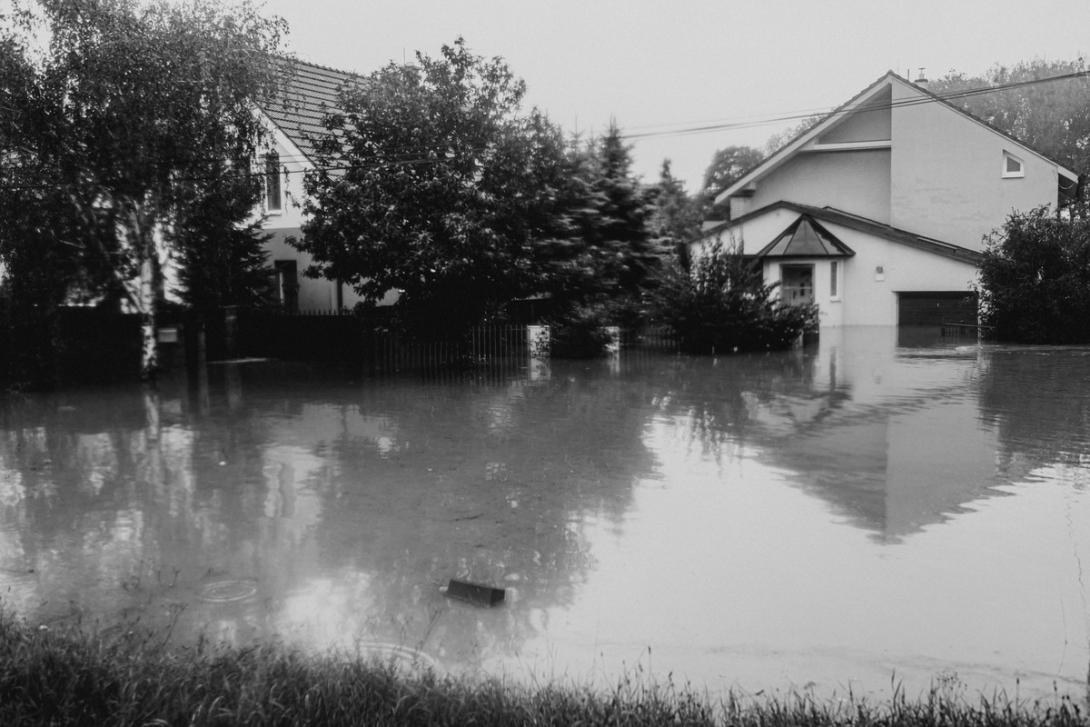
Pakistan faces an escalating frequency of natural disasters, necessitating a strategic shift in financial planning. Traditional systems, which react only post-disaster, prove ineffective. Instead, we need proactive planning that predicts risks, allocates resources, and focuses on risk reduction. Financial institutions play a crucial role by developing models that simulate disaster scenarios using climate projections, historical data, and socio-economic factors. These models guide the creation of resilient financial products and investment strategies. In summary, a data-driven, forward-thinking approach is essential to safeguard lives and livelihoods in the face of natural calamities.
Innovative Financial Instruments
1. Catastrophe Bonds (Cat Bonds): High returns but risk of losing principal if a disaster occurs.
2. Resilience Bonds: Fund infrastructure upgrades while transferring risk, linking returns to resilience outcomes to incentivize investment in risk reduction.
3. Microinsurance: Enhances resilience in vulnerable communities by offering affordable insurance to aid quick recovery post-disaster.
4. Index-Based Insurance: Pays out based on predefined indices like rainfall levels, simplifying claims and reducing costs.
Private Sector Involvement
1.Public-Private Partnerships (PPPs): Leverage private capital for infrastructure projects designed to withstand extreme weather.
2.Tax Incentives: Encourage businesses to adopt resilient practices, such as retrofitting buildings.
3.Environmental, Social, and Governance (ESG) Criteria: Drive private contributions to resilience, with ESG-focused funds prioritizing companies demonstrating strong environmental stewardship and social responsibility.
Regulatory Frameworks and Metrics
1.Climate-Related Risk Disclosure: Regulators can mandate companies to report on their exposure to and management of climate-related risks.
2.Task Force on Climate-related Financial Disclosures (TCFD): Provides a framework for reporting, enabling informed investor decisions.
3.Resilience Metrics: Essential for measuring progress and guiding investment, capturing the true cost of human, social, and natural capital.
4.Resilience Dividends Concept: Comprehensive evaluation of financial performance based on the benefits from resilience investments.
Shift to Long-Term Perspectives
1. Long-Term Outlook: Financial decisions often overlook long-term risks and benefits due to short-term gains.
2. Aligning Incentives: Encourage long-term perspectives by aligning performance metrics and executive compensation with resilience goals.
3. Long-Term Investment Vehicles: Green bonds promote sustainable development by financing projects with long-term resilience benefits.
Global Coordination
1. Multilateral Institutions' Role: The World Bank and IMF play key roles in fostering global cooperation and providing financial support for resilience.
2. Global Standards: Establishing standards for risk assessment, resilience metrics, and financial disclosures to harmonize efforts across countries.
3. International Climate Funds: Funds like the Green Climate Fund mobilize resources for resilience projects in developing countries, addressing the disproportionate impact of disasters on vulnerable populations.
Conclusion
Integrating risk reduction into financial tools is essential for building resilience in Pakistan. Proactive planning, innovative instruments, private sector involvement, regulatory frameworks, comprehensive metrics, and a long-term perspective are critical. By embedding resilience into financial systems, we can better prepare for and mitigate disaster impacts, ensuring sustainable development and economic stability.
References
1. Mechler, R., et al. "Managing unnatural disaster risk from climate change." Science 364.6433 (2019): 1184-1185.
2. Ranger, N., et al. "Insurance Development Forum: Towards a Framework for Disaster Risk Finance." 2020.
3. Cummins, J.D., and Weiss, M.A. "Convergence of insurance and financial markets: hybrid and securitized risk-transfer solutions." Journal of Risk and Insurance 76.3 (2009): 493-545.
4. Zeckhauser, R., and Viscusi, W.K. "Risk within reason." Science 248.4955 (1990): 559-564.
5. Dercon, S., and Clarke, D. "Dull Disasters? How Planning Ahead Will Make a Difference." Oxford University Press, 2016.
6. Kohler, M., et al. "The effectiveness of disaster risk finance instruments." World Bank, 2021.
7. Falzon, R., and Nicholas, S. "Incorporating ESG into investment decision-making." CFA Institute, 2021.
8. Task Force on Climate-related Financial Disclosures. "Final Report: Recommendations of the Task Force on Climate-related Financial Disclosures." 2017.
9. Watkiss, P., et al. "The economics of climate-resilient development." Nature Climate Change 5.9 (2015): 835-836.
10. Martin, R., et al. "The resilience dividend: the benefits of risk reduction." UN Office for Disaster Risk Reduction (UNDRR), 2020.
11. Green Bond Principles. "Green Bond Principles: Voluntary Process Guidelines for Issuing Green Bonds." International Capital Market Association (ICMA), 2021.
12. World Bank. "Building Resilience in Developing Countries." World Bank, 2019.
13. International Monetary Fund. "IMF Strategy on Climate Change." 2021.
14. Melecky, M., and Raddatz, C. "Fiscal responses after catastrophes and the enabling role of financial development." World Bank Economic Review 29.1 (2015): 129-149.
15. Kousky, C. "Financing flood losses: A discussion of the National Flood Insurance Program." Risk Management and Insurance Review 24.1 (2021): 23-45.
Need for Proactive Financial Planning
Pakistan faces an escalating frequency of natural disasters, necessitating a strategic shift in financial planning. Traditional systems, which react only post-disaster, prove ineffective. Instead, we need proactive planning that predicts risks, allocates resources, and focuses on risk reduction. Financial institutions play a crucial role by developing models that simulate disaster scenarios using climate projections, historical data, and socio-economic factors. These models guide the creation of resilient financial products and investment strategies. In summary, a data-driven, forward-thinking approach is essential to safeguard lives and livelihoods in the face of natural calamities.
Innovative Financial Instruments
1. Catastrophe Bonds (Cat Bonds): High returns but risk of losing principal if a disaster occurs.
2. Resilience Bonds: Fund infrastructure upgrades while transferring risk, linking returns to resilience outcomes to incentivize investment in risk reduction.
3. Microinsurance: Enhances resilience in vulnerable communities by offering affordable insurance to aid quick recovery post-disaster.
4. Index-Based Insurance: Pays out based on predefined indices like rainfall levels, simplifying claims and reducing costs.
Private Sector Involvement
1.Public-Private Partnerships (PPPs): Leverage private capital for infrastructure projects designed to withstand extreme weather.
2.Tax Incentives: Encourage businesses to adopt resilient practices, such as retrofitting buildings.
3.Environmental, Social, and Governance (ESG) Criteria: Drive private contributions to resilience, with ESG-focused funds prioritizing companies demonstrating strong environmental stewardship and social responsibility.
Regulatory Frameworks and Metrics
1.Climate-Related Risk Disclosure: Regulators can mandate companies to report on their exposure to and management of climate-related risks.
2.Task Force on Climate-related Financial Disclosures (TCFD): Provides a framework for reporting, enabling informed investor decisions.
3.Resilience Metrics: Essential for measuring progress and guiding investment, capturing the true cost of human, social, and natural capital.
4.Resilience Dividends Concept: Comprehensive evaluation of financial performance based on the benefits from resilience investments.
Shift to Long-Term Perspectives
1. Long-Term Outlook: Financial decisions often overlook long-term risks and benefits due to short-term gains.
2. Aligning Incentives: Encourage long-term perspectives by aligning performance metrics and executive compensation with resilience goals.
3. Long-Term Investment Vehicles: Green bonds promote sustainable development by financing projects with long-term resilience benefits.
Global Coordination
1. Multilateral Institutions' Role: The World Bank and IMF play key roles in fostering global cooperation and providing financial support for resilience.
2. Global Standards: Establishing standards for risk assessment, resilience metrics, and financial disclosures to harmonize efforts across countries.
3. International Climate Funds: Funds like the Green Climate Fund mobilize resources for resilience projects in developing countries, addressing the disproportionate impact of disasters on vulnerable populations.
Conclusion
Integrating risk reduction into financial tools is essential for building resilience in Pakistan. Proactive planning, innovative instruments, private sector involvement, regulatory frameworks, comprehensive metrics, and a long-term perspective are critical. By embedding resilience into financial systems, we can better prepare for and mitigate disaster impacts, ensuring sustainable development and economic stability.
References
1. Mechler, R., et al. "Managing unnatural disaster risk from climate change." Science 364.6433 (2019): 1184-1185.
2. Ranger, N., et al. "Insurance Development Forum: Towards a Framework for Disaster Risk Finance." 2020.
3. Cummins, J.D., and Weiss, M.A. "Convergence of insurance and financial markets: hybrid and securitized risk-transfer solutions." Journal of Risk and Insurance 76.3 (2009): 493-545.
4. Zeckhauser, R., and Viscusi, W.K. "Risk within reason." Science 248.4955 (1990): 559-564.
5. Dercon, S., and Clarke, D. "Dull Disasters? How Planning Ahead Will Make a Difference." Oxford University Press, 2016.
6. Kohler, M., et al. "The effectiveness of disaster risk finance instruments." World Bank, 2021.
7. Falzon, R., and Nicholas, S. "Incorporating ESG into investment decision-making." CFA Institute, 2021.
8. Task Force on Climate-related Financial Disclosures. "Final Report: Recommendations of the Task Force on Climate-related Financial Disclosures." 2017.
9. Watkiss, P., et al. "The economics of climate-resilient development." Nature Climate Change 5.9 (2015): 835-836.
10. Martin, R., et al. "The resilience dividend: the benefits of risk reduction." UN Office for Disaster Risk Reduction (UNDRR), 2020.
11. Green Bond Principles. "Green Bond Principles: Voluntary Process Guidelines for Issuing Green Bonds." International Capital Market Association (ICMA), 2021.
12. World Bank. "Building Resilience in Developing Countries." World Bank, 2019.
13. International Monetary Fund. "IMF Strategy on Climate Change." 2021.
14. Melecky, M., and Raddatz, C. "Fiscal responses after catastrophes and the enabling role of financial development." World Bank Economic Review 29.1 (2015): 129-149.
15. Kousky, C. "Financing flood losses: A discussion of the National Flood Insurance Program." Risk Management and Insurance Review 24.1 (2021): 23-45.


